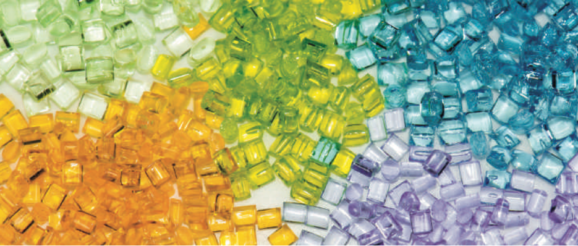Looking Ahead to New Packaging Material Innovation | Packaging World

One of the UN sustainable development materials goals, according to a new report by PMMI Business Intelligence, is to increase the share of responsibly sourced, renewable content, to at least 75%.
Suppliers recognize that resin content is a key component to future material innovation, and according to one VP of Technical Excellence and Innovation at a material supplier, “We need to improve our material selections from resin suppliers and use more post-consumer recycled content to offer a more diverse product portfolio.”
Polymers:
· Polypropylene (PP) is a versatile material demonstrating reliable barrier properties. High performance PP grades can often be used in place of polyethylene.
· Polyethylene (PE) is a mono-material structure, meaning that it is naturally more recyclable than multi-material composites. PE often fails to provide adequate barrier protection, however.
· Polylactic acid or polylactide (PLA) is a fully biodegradable thermoplastic polymer consisting of renewable raw materials for direct food contact compliance (USA and EU).
· PHAs (polyhydroxyalkanoates) are bio-based, biodegradable, and have a wide range of potential applications, given their physical properties.
· Bio-based PE and bio-based PET, as well as bio-based polyamides, make up a large portion of the global bioplastics market, accounting for 44% (1.1 million tons) of all bio-based plastics.
· Shift from PET to PEF: PEF mimics many of the same material properties of PET but is bio-based and actually offers superior physical barrier and thermal protections. PEF is not expected to be commercially available until 2023.
· Advances in HDPE, polyolefin elastomers and plastomers, and specialty coatings, have opened the door to replacing traditional nylon or PET films to improve sustainability without compromising barrier protection or rigidity.
Over half of CPGs are evaluating or implementing new materials to be more sustainable, and nearly all CPGs are pursuing recyclable materials or higher PCR content, according to the report.
Recycled and Reused PP
Polypropylene can now be more efficiently recycled, yielding a material that can serve as a high-quality replacement for virgin plastic. The process yields material that is safe and efficient, even meeting purity standards for food and beverage packaging.
Barrier Technology
There are new ways to make paperboard packaging resistant to water, grease, and temperature. The industry is seeking a fiber-based replacement for plastic bubble mailers.
Performance Strength
Initiatives are making paperboard packaging as strong and lightweight as possible to be more efficient and sustainable. Paper factories are also experimenting with thinner cover layers and lower ridges in the production of corrugated cardboard.
Teams are actively exploring new material compositions and combinations; the next material revolution that will drastically change the packaging industry is most likely yet to be discovered.
Brand manufacturers are always looking for new and innovative materials to improve packaging sustainability, particularly the following characteristics:
Source: PMMI Business Intelligence, “Packaging Sustainability: A Changing Landscape 2020”
Download the FREE Executive Summary below, or PMMI Members can download the entire report here.
Make plans to visit PACK EXPO International, November 8-11, to see on-trend sustainable processing and packaging machinery and materials.
